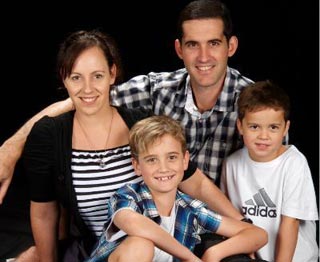5 – 6 years physical development
By the time she starts school, a child will be physically confident and proud of her achievements. At this age, she will still misjudge the extent of her abilities and so accidents are common.
She is a confident at climbing, sliding, swinging and dancing and gets a lot of enjoyment out of being active.
She loves to show you what she can do.
She can balance on one foot for a short time.
She can hop on both feet separately.
Her fine motor skills have developed enough that she can write and draw in a controlled manner.
She is learning to colour-in while staying in the lines.
She is learning to skip with a skipping rope.
She is learning to catch a medium size ball.
How can I encourage her physical development?
By the time she starts school, your child will usually be clearly right or left handed. Don’t try to force her to change as this will only confuse her and may cause a delay in her learning.
Encourage her fine motor skills by giving her plenty of opportunities to cut, draw and colour-in.
Play games that involve sorting objects, matching shapes and letters.
Give her lots of opportunities to enjoy music through singing and dancing.
What can I do to encourage her speech and language development?
Even though she’s learning to read and will have to read to you each day, don’t stop reading stories to her.
Always show her that you’re interested in hearing her news of the day. This is the time when all her conversation skills will be put to good use.
6 – 9 years physical development
During these ‘middle years’ a child will place great value on his developing physical ability. While he has now mastered all the basic skills he’ll need in life – walking, running, climbing, jumping, throwing, pedalling, catching – he will now focus on fine-tuning these skills, along with developing some party tricks of his own such as handstands or cartwheels. The ability to run fast, ride fast, hit a ball with a bat hard, or throw a ball far may be important to him as his peer group will tend to give children with these abilities a higher status.
At this age, he will have high energy levels and he will:
be able to ride a two wheeler bike without training wheels
enjoy climbing
enjoy learning to swim
have strong ball skills – he will be able to catch and throw confidently
be able to draw a picture of a house and will include the garden and sky
How can I encourage his physical development?
Provide him with simple building kits, children’s tool kits, dolls and opportunities for playing in cubby houses.
Encourage your child to play games involving bats and balls.
Take a footy to the park and have a kick with him.
Let him help you in the kitchen with simple recipes that he can follow.
Join him up to a local sporting club.
How can I encourage his speech and language development?
Your child may still have a lingering lisp as her speech matures. This will disappear over time, but if it’s causing anxiety or embarrassment, you may consider consulting a speech therapist that could fast-track its disappearance.
Talk to him and encourage him to talk to you. If you lay the ground-work now for open channels of communication, you’ll have a smoother passage through the notoriously bumpy adolescent years!
Give him opportunities to use the telephone. Perhaps allow him to make arrangements with a friend on the phone rather than you doing it for him.
Make sure that he has access to age-appropriate reading material. Your child’s teacher or the school librarian should be able to guide you.
Provide him with lots of opportunities to listen to music.





